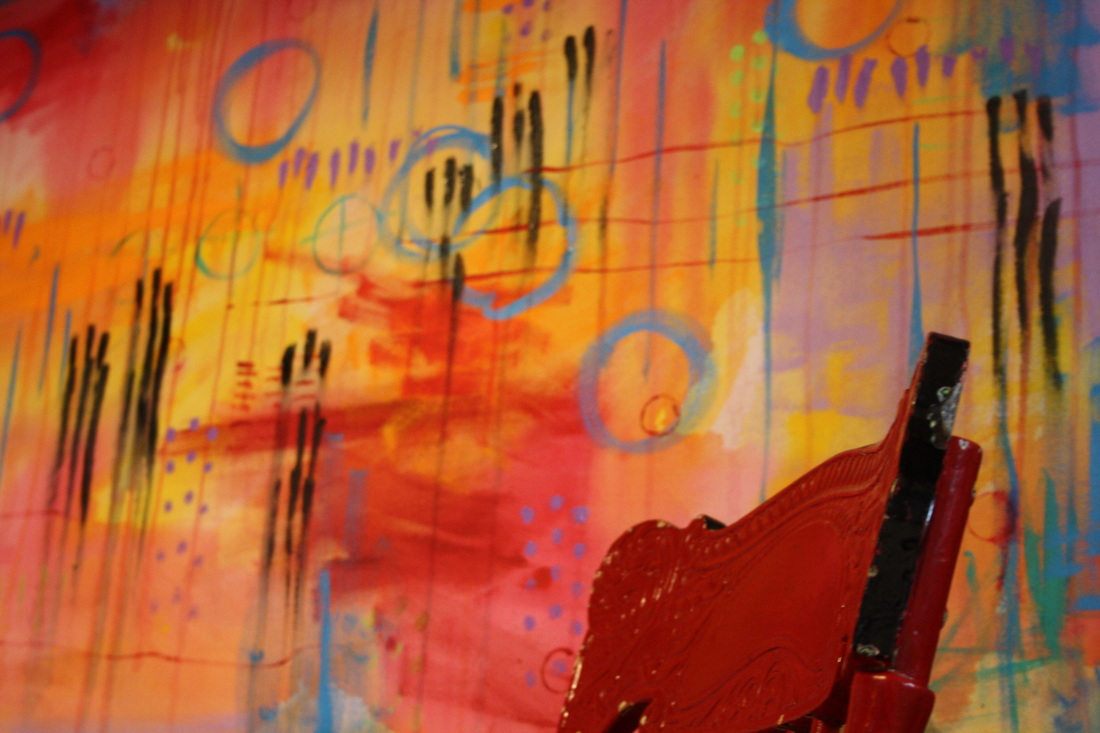|
I have had several friends who were directors at art galleries or interior designers and they shared many tips for hanging art with me. I have also been in several homes or businesses where I've seen prints or paintings (or calendars) hung near the ceiling...it wasn't pretty. And because I was recently interviewed on how to hang art, I decided I should share what I've learned here, too.
Most of these 'rules' can be broken (which I do regularly) but they are a good guideline. Because I'm 5'2" (62"), I use myself as a guide but because my husband is 6 feet tall, I so also hang work a bit higher on occasion. I also don't keep it to artwork or prints, I also include pottery (often find suitable hangers for three dimensional items at craft, hobby or hardware stores), memorabilia and at times interesting framed fabric or scrapbooking paper. 1. Typically pieces should be hung so that the vertical center of the painting is at approximately 60 inches from the floor. For example, if I hang a painting that measures 30x40 inches, with 30 inches being the height, I would make sure that the 60 inch mark on the wall would hit the halfway or 15 inch (30 divided by 2) mark on the painting. Recently my work, all in different sizes, was hung with the tops of each piece at the same height which is a contemporary manner of displaying artwork and was very pleasing to the eye. 2. When hanging work in a place where you typically sit rather than stand, such as a dining room, the paintings can be hung slightly lower to incorporate the fact that the viewer's sight line will most likely be lower. 3. If you are hanging work over furniture, such as the back of a sofa or a hall table, a good guide is to hang the work anywhere from 6 to 10 inches above the piece. This gives the furniture and the artwork a visual connection. 4. When creating a grouping of smaller pieces, initially I like to place them on the floor in a pleasing combination as they should be treated as one large piece, so that the center of the group of art will sit at 60 inches on the wall. Groupings do not need to match, the style of work or frames (or frameless) pieces can all work together well if they all appeal to you. 5. Finally, if you have a piece that tends to tilt, try using a piece of sticky tac or tape on the bottom right corner. I find it works every time. Masking tape is also good to use to mark the 60 inch point on the wall or the place you want to hang your hook, instead of marking with a pencil. Comments are closed.
|
|




